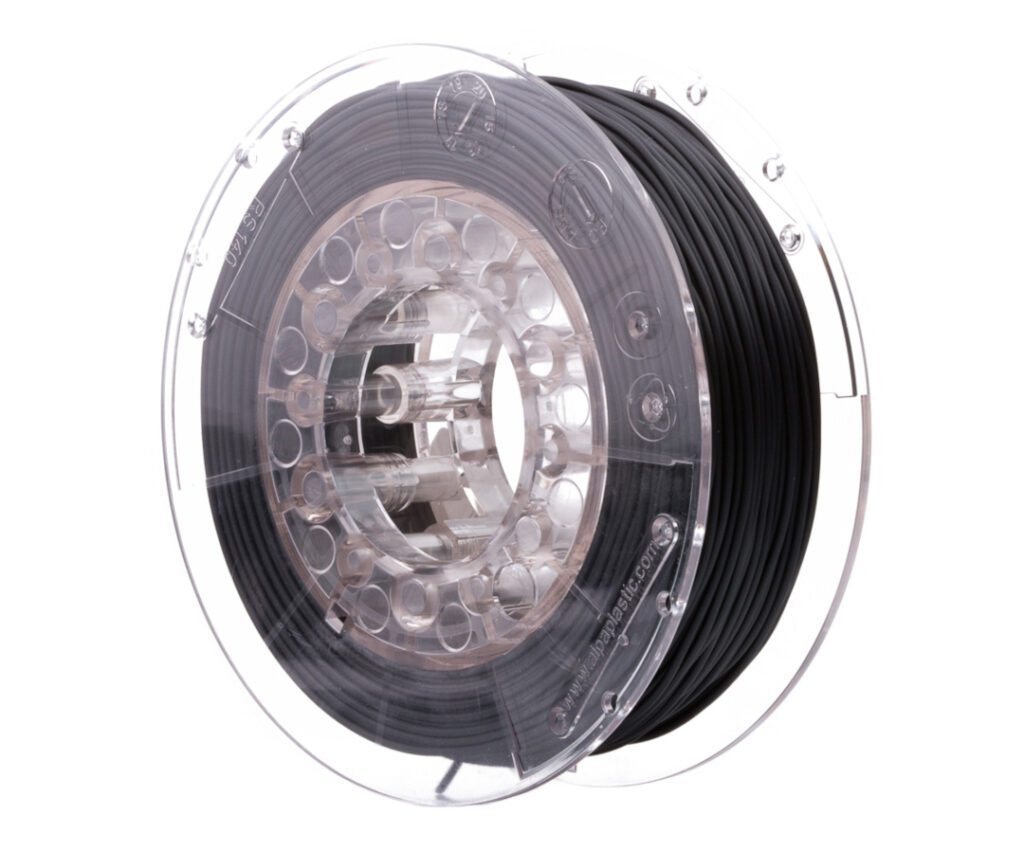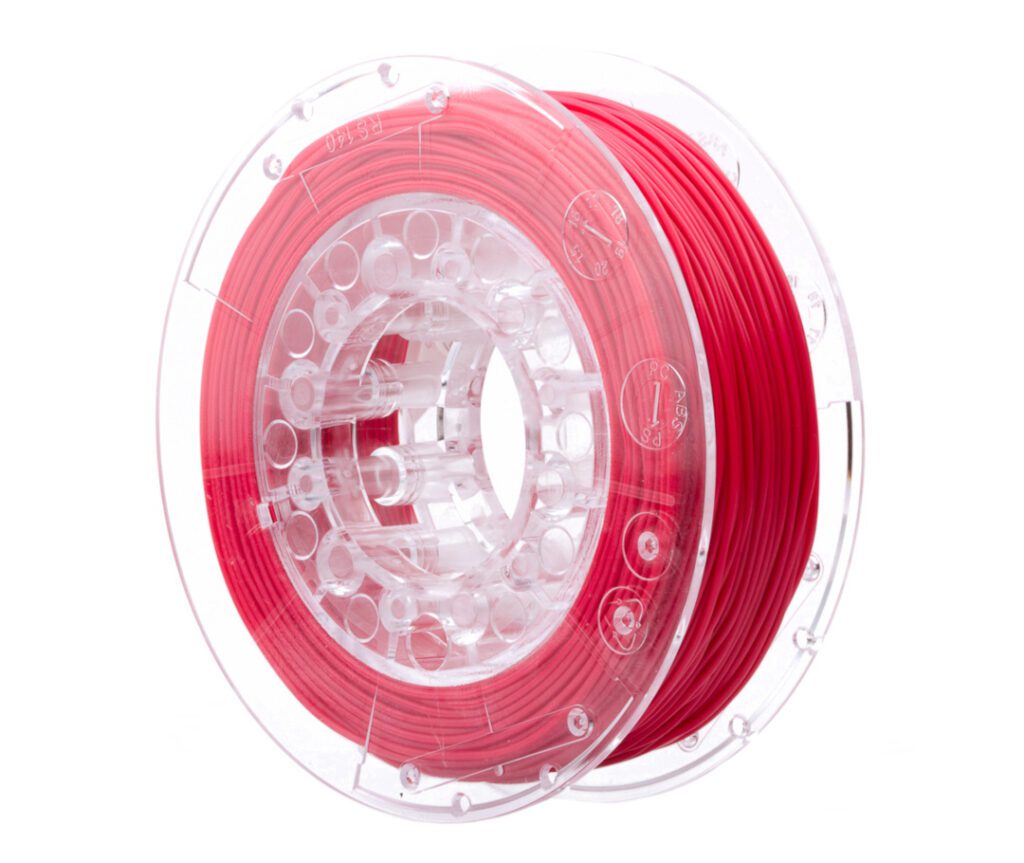Table of Contents:
Filaments are a group of thermoplastic materials used in 3D printing technology.
The chemical composition of individual thermoplastics determines their physical properties.
A specific type of thermoplastic materials are flexible filaments, also called flex.
Thanks to them, it is possible to 3D print parts distinguished by their ability to deform flexibly.
What else is worth knowing about flex filaments?
Flexible filament - basic information
Thermoplastic flex materials are ideal for printing small series of decorative, functional and collector products.
In addition, this thermoplastic is used for printing structural components and housings.
At home, flex filament can be used to produce useful parts with flexible properties. Such materials are mainly produced from TPE ( Thermoplastic Elastomers), which have the ability to quickly return to their original shape after deformation.
During 3D printing, each successive layer adheres tightly to the previous one, thus creating a compact and homogeneous product that is pleasant to the touch.
Properties of flex filaments
3D prints made from flexible filaments have a high coefficient of friction.
In addition, they are resistant to a variety of chemicals.
These properties make them ideal for the production of parts distinguished by their flexibility, durability and high resistance to external factors.
Examples of applications include tires and bumper covers for remote-control vehicles, as well as non-slip pads and feet for furniture and various appliances.
Flex filament is perfect for do-it-yourself (DIY) projects.
The various flexible filaments differ from each other in hardness, measured on the Shore scale, among other things.
Due to a number of specific characteristics of elastomers, concerning, for example, the optimal operating temperature of the print head and work table, it is advisable to carefully read the recommendations of the filament manufacturer.
First, however, make sure that your 3D printer model is suitable for flex filaments.
Flexible filament - printing
The printing process with TPE-based elastomers requires experience and skillful setting of the operating temperature. Incorrectly set parameters of the printing device can contribute to unwanted stretching, which leads to loss of structure, curling and curling of prints.
In addition, when working with flexible filaments, it’s a good idea to set low print speeds, as smooth head movements minimize print damage and distortion.
The use of flex materials can be problematic on equipment equipped with a Bowden-type extruder.
Such a filament feeding system is not suitable for working with soft and easily compressed materials.
A better solution is to choose direct extruders, which provide a short filament path from the extruder to the print head.
Elastomers - applications and additional information
Flexible filaments are available in different versions and sizes.
The most commonly used are materials with a diameter of 1.75 mm wound on a spool.
With their versatile application, elastomers are used in a variety of industries, including.
in the automotive industry for the manufacture of seals, diaphragms, bumpers, moldings, bushings and wedges.
The unique elastic and damping properties also make this material used in industry for printing various types of spare parts.
What else is worth knowing about flex filaments?
- High flexibility and suppleness allow easy separation of the printed object from the printer table.
- Materials of this type have excellent reflexive deformation properties.
- The selected filaments have a hardness of 55D (Shore D scale) and a density of 1.23 g/cm³.
The maximum elongation at break can be as high as 400%.
Tear strength, on the other hand, is about 180 N/mm.
Abrasion resistance is in the range of 35 mm³.
Flexible filaments - suggested printing parameters
To achieve the best possible printing results with flexible thermoplastic materials, it is necessary to adjust the parameters of the 3D printer accordingly.
The set temperature of the print head should oscillate between 210°C and 230°C.
This is the recommended range, which allows the filament to achieve the right fluidity necessary for precise printing.
On the other hand, the working table temperature should be set from 20°C to a maximum of 80°C.
It is worth mentioning that the lower table temperature is recommended for thinner prints requiring less adhesion.
The upper limit is reserved for larger objects needing better adhesion to the table.
Cooling 3D prints
In addition, it is recommended to use print cooling, especially at low speeds.
Cooling is crucial to ensure high quality prints, as it helps maintain the structure of the print and thus prevents deformation.
Note, however, that due to the design differences of individual printers, optimal printing parameters may need to be adjusted individually through experimentation.
Compatibility of flex filament with 3D printers
Flex filament, known for its flexibility and strength, is compatible with a wide range of FFF (Fused Filament Fabrication) and FDM (Fused Deposition Modelling) 3D printers.
Such a thermoplastic material can be used in all 3D printers that do not have built-in safeguards against the use of materials from third-party companies.
Flexible filament is also an ideal choice for open source printers, which are designed for easy modification and customization.
Thanks to its versatility, the material allows the creation of prints with unique properties, such as flexibility and impact resistance.
This combination is an attractive choice for intermediate and experienced 3D printer users.
How useful was this post?
Click on a star to rate it!
Average rating 0 / 5. Vote count: 0
No votes so far! Be the first to rate this post.





















